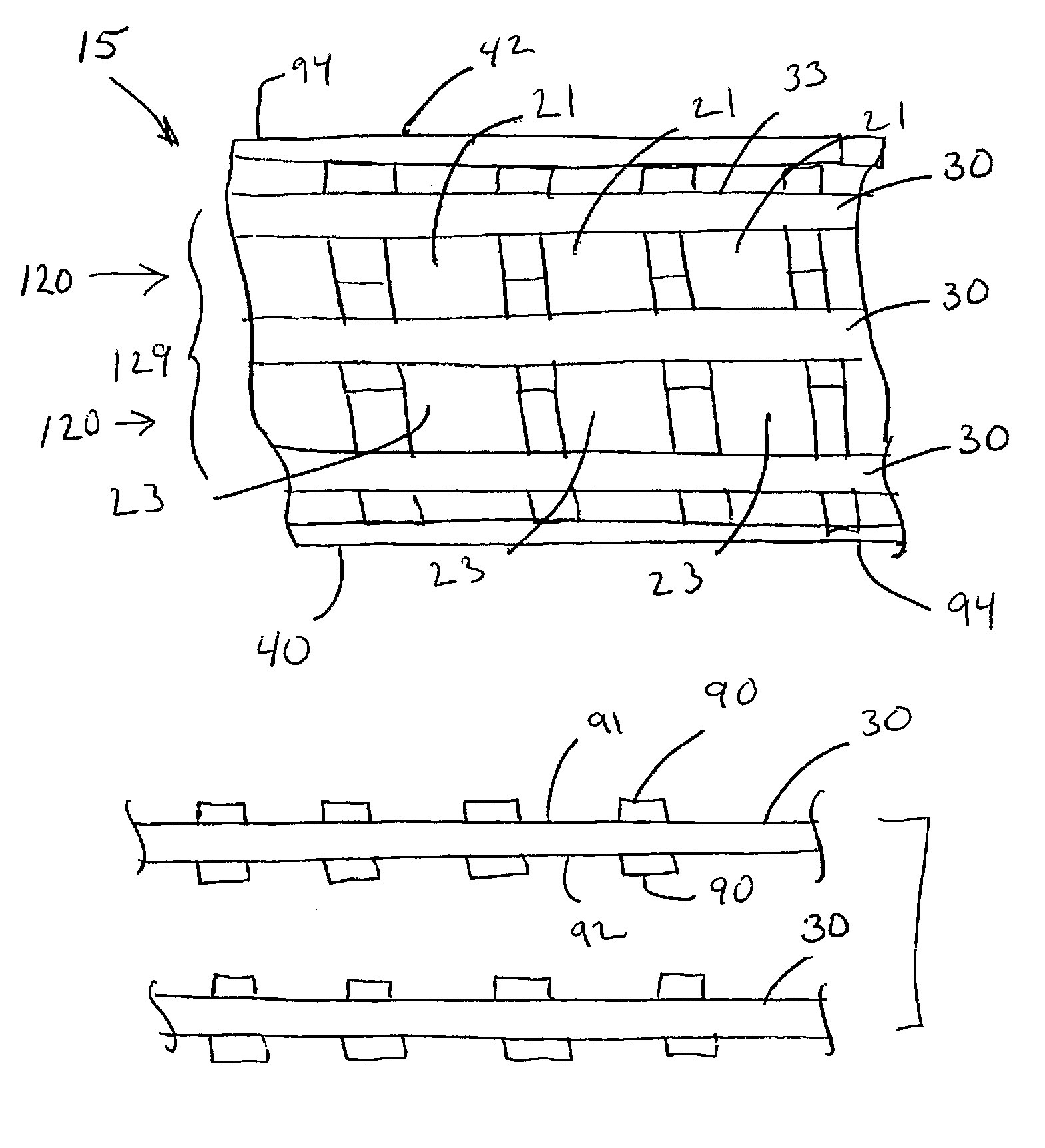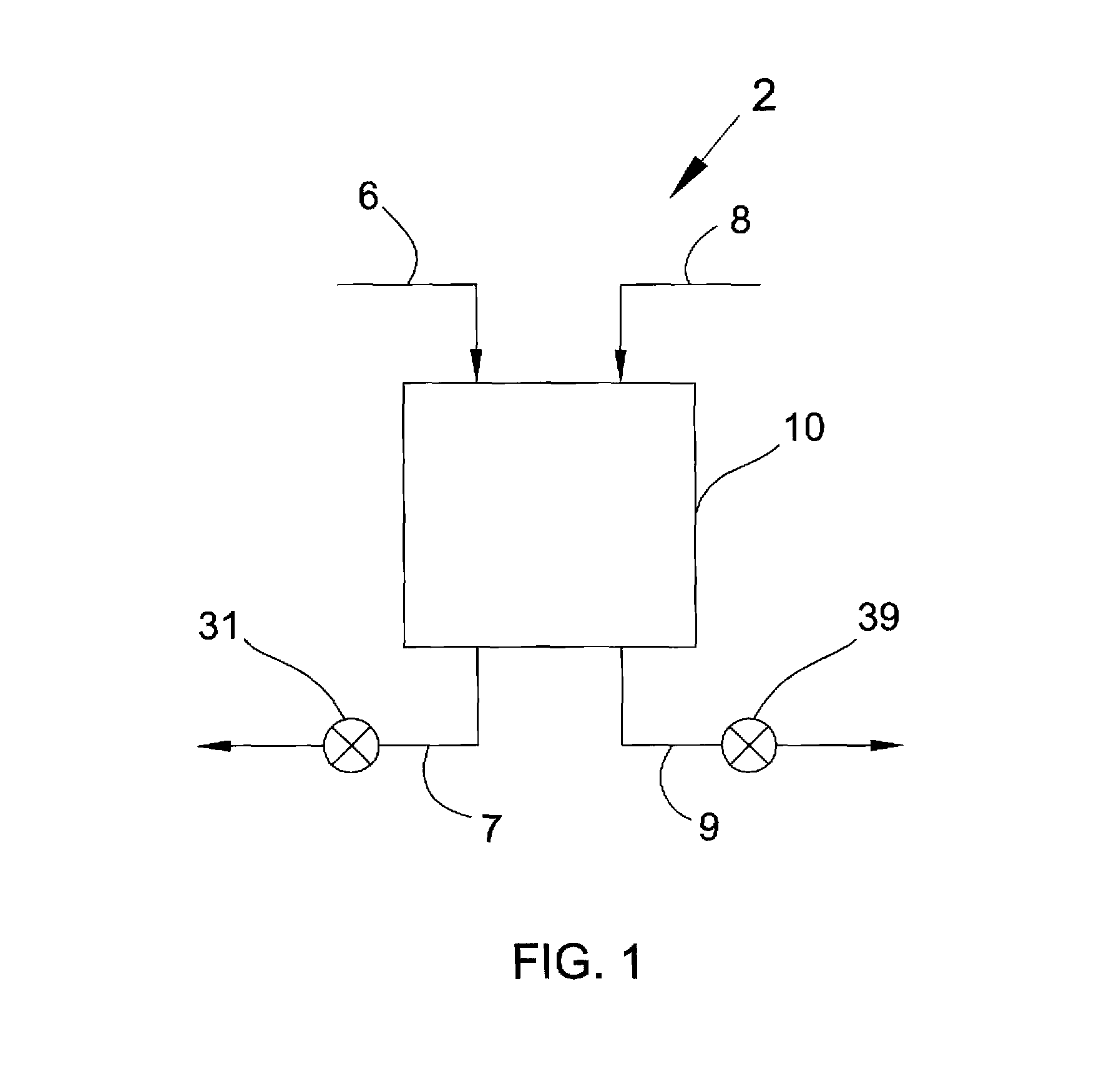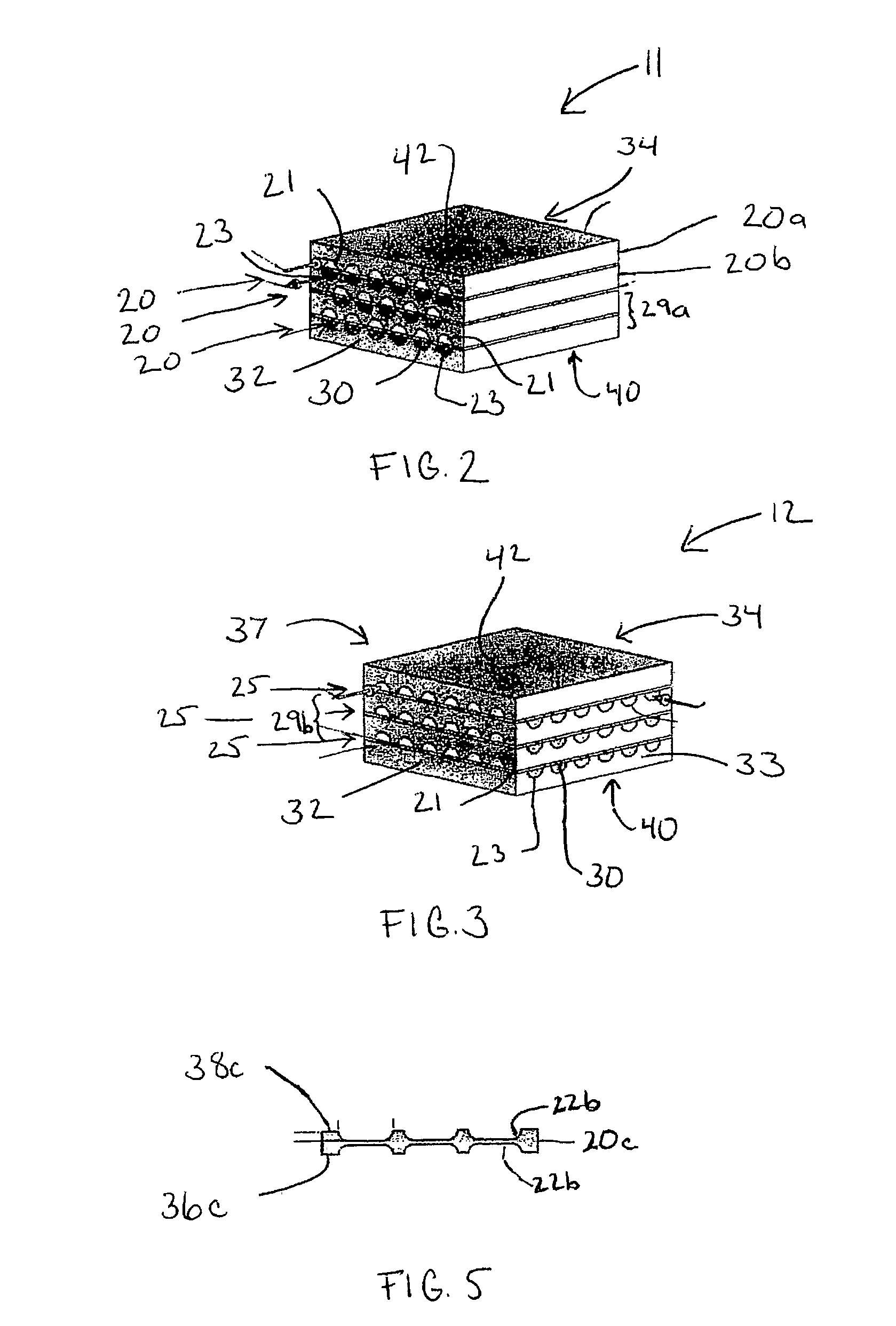MECS dialyzer
a dialyzer and micro-technology technology, applied in the field of hemodialysis, can solve the problems of reducing the efficiency of mass transfer on the dialysate side, hollow fiber dialyzers have a mal-distribution of dialysate flow, and the technology has not changed significantly, so as to accelerate the mass transfer in dialysis applications
- Summary
- Abstract
- Description
- Claims
- Application Information
AI Technical Summary
Benefits of technology
Problems solved by technology
Method used
Image
Examples
Embodiment Construction
[0045]Reference will now be made to embodiments illustrated in the drawings and specific language which will be used to describe the same. It will nevertheless be understood that no limitation of the scope of the invention is thereby intended, such alterations and further modifications in the illustrated devices, as such further applications of the principles of the invention as illustrated therein as being contemplated as would normally occur to one skilled in the art to which the invention relates.
[0046]The term “microchannel” refers to a channel having at least one internal dimension of width or height of up to about 1000 microns.
[0047]The term “non-turbulent” refers to the flow of a fluid through a microchannel that is laminar or in transition. The Reynolds Number for the flow of the fluid through the microchannel may be up to about 4000. The Reynolds Number used herein is calculated using the hydraulic diameter which is based on the actual shape of the microchannel.
[0048]The te...
PUM
 Login to View More
Login to View More Abstract
Description
Claims
Application Information
 Login to View More
Login to View More - R&D
- Intellectual Property
- Life Sciences
- Materials
- Tech Scout
- Unparalleled Data Quality
- Higher Quality Content
- 60% Fewer Hallucinations
Browse by: Latest US Patents, China's latest patents, Technical Efficacy Thesaurus, Application Domain, Technology Topic, Popular Technical Reports.
© 2025 PatSnap. All rights reserved.Legal|Privacy policy|Modern Slavery Act Transparency Statement|Sitemap|About US| Contact US: help@patsnap.com



